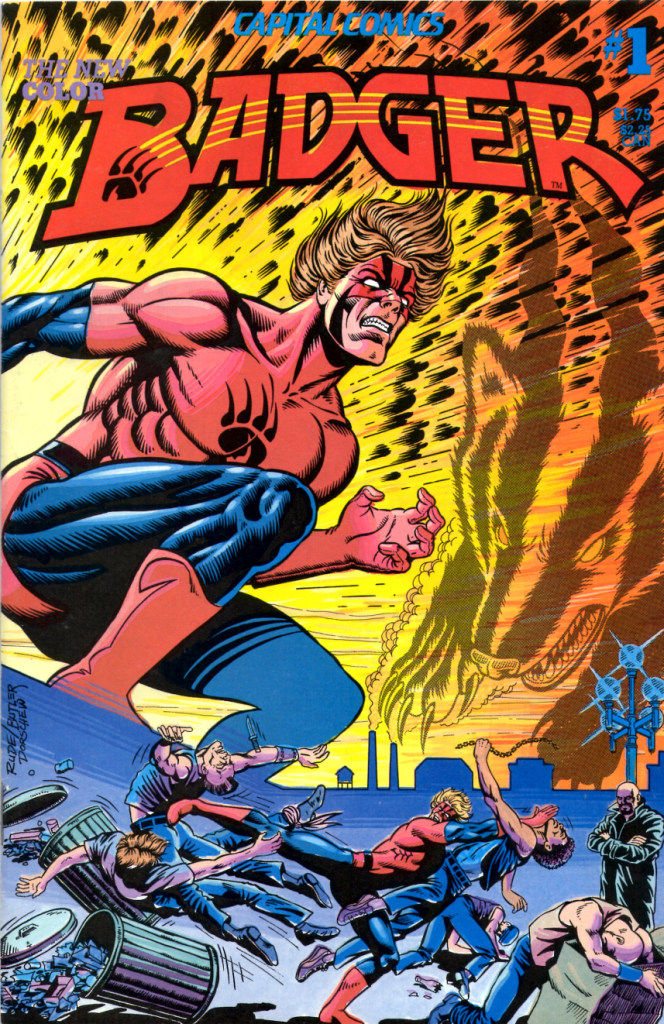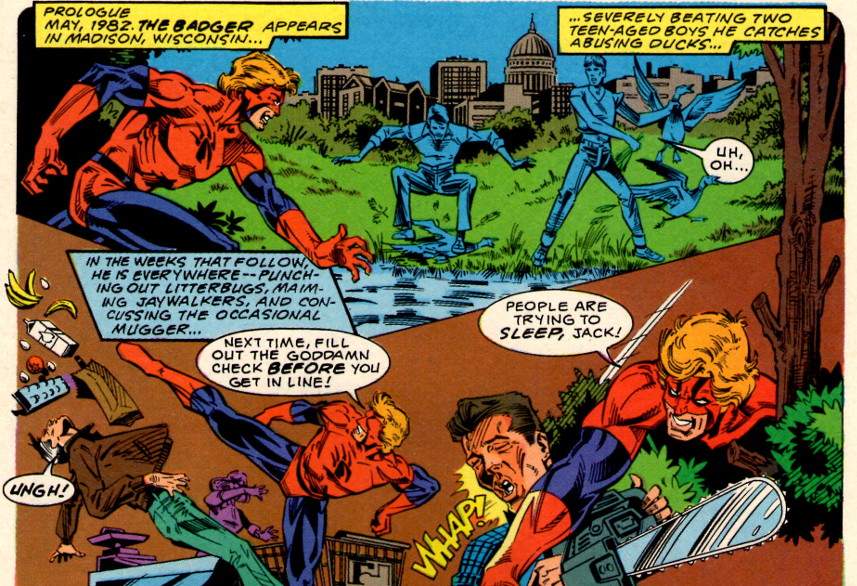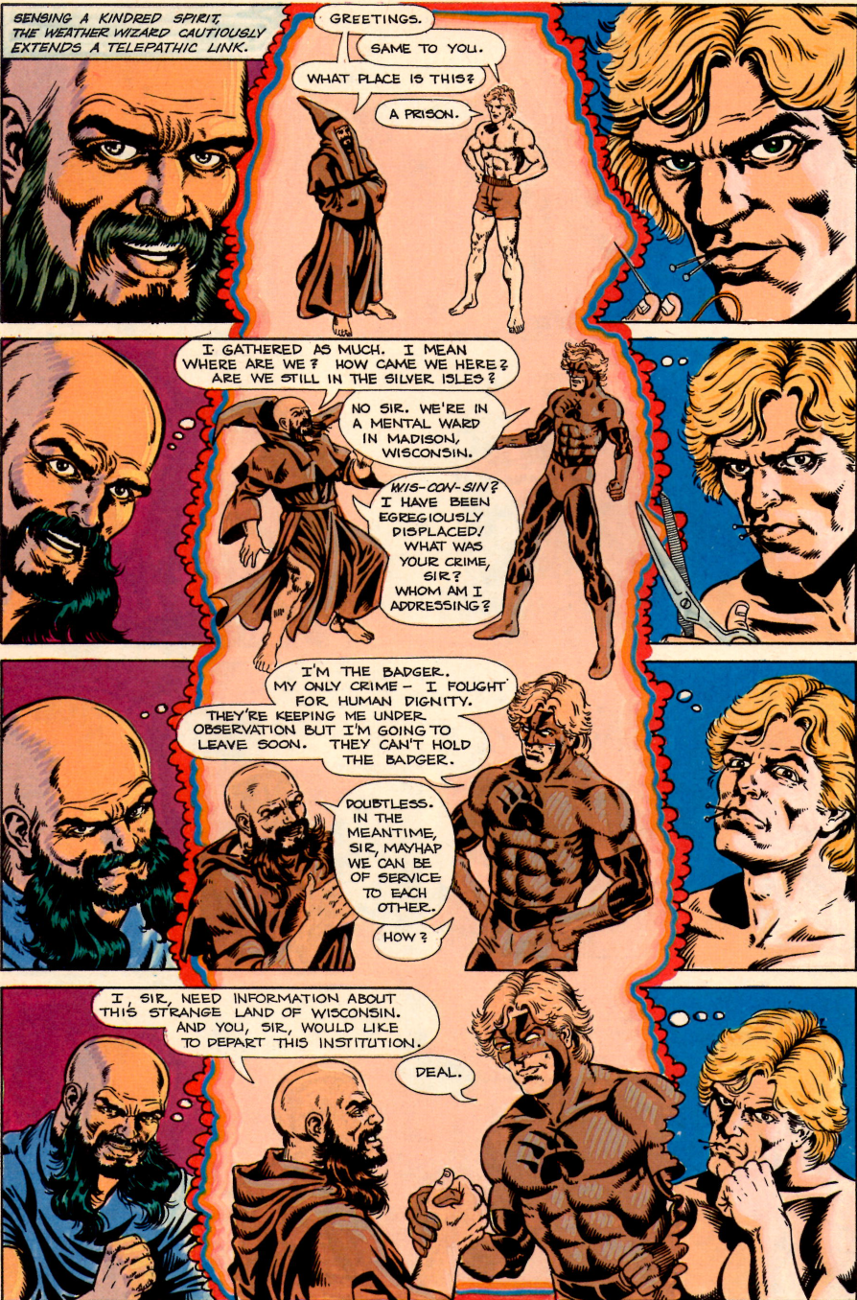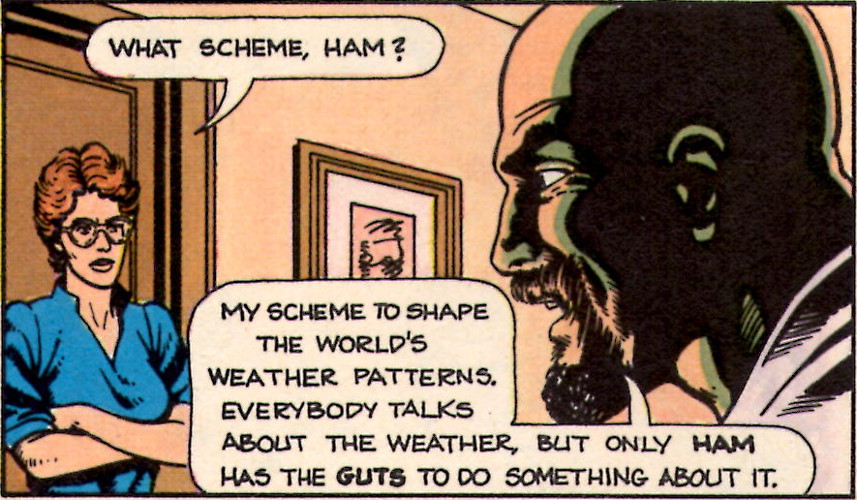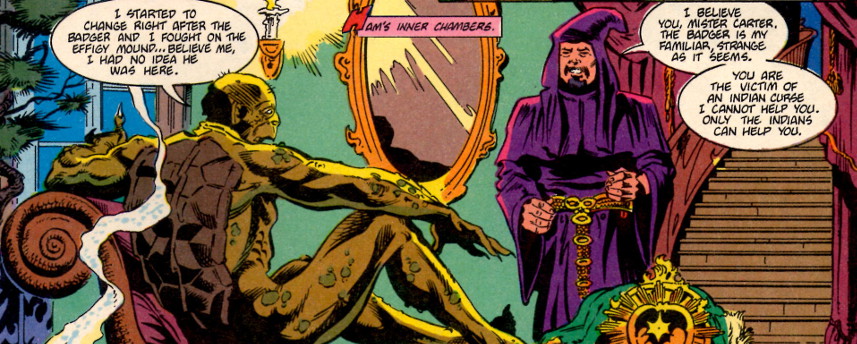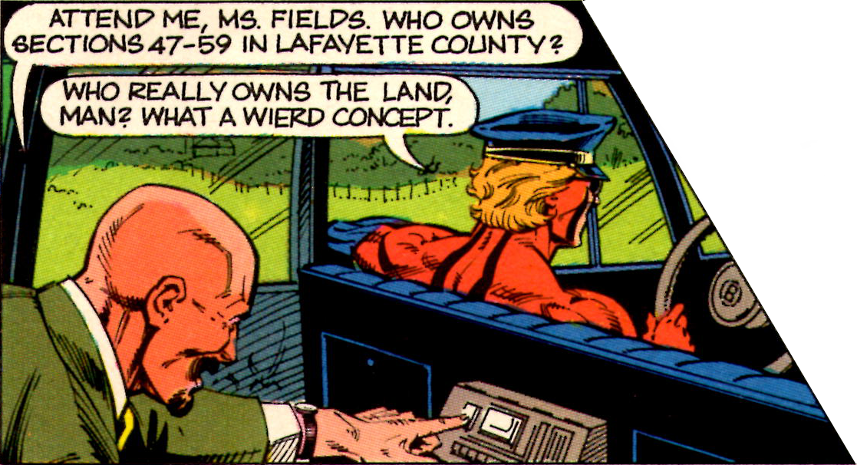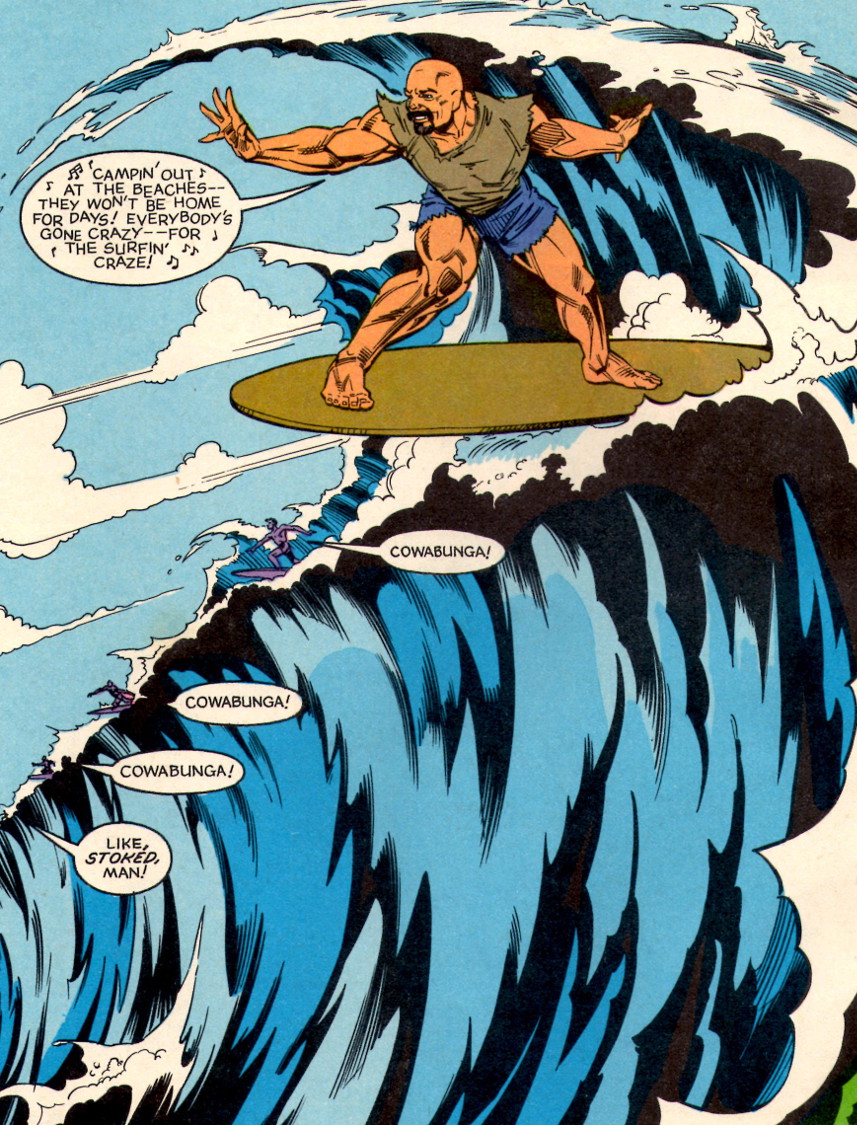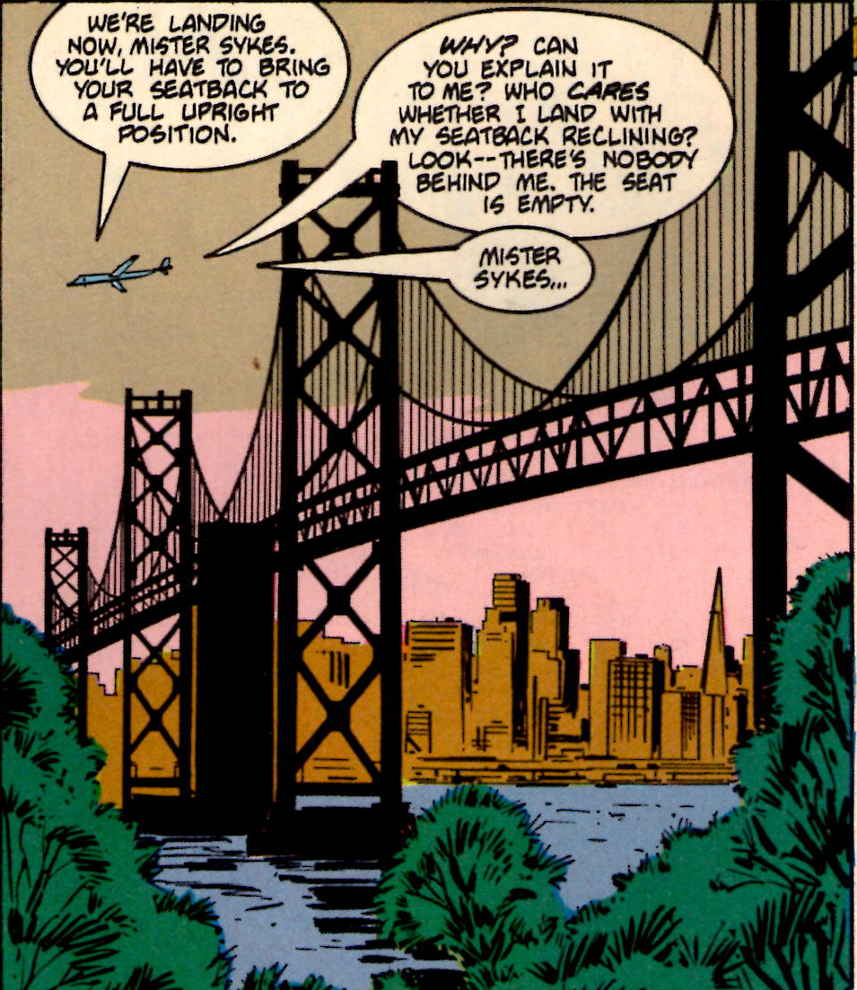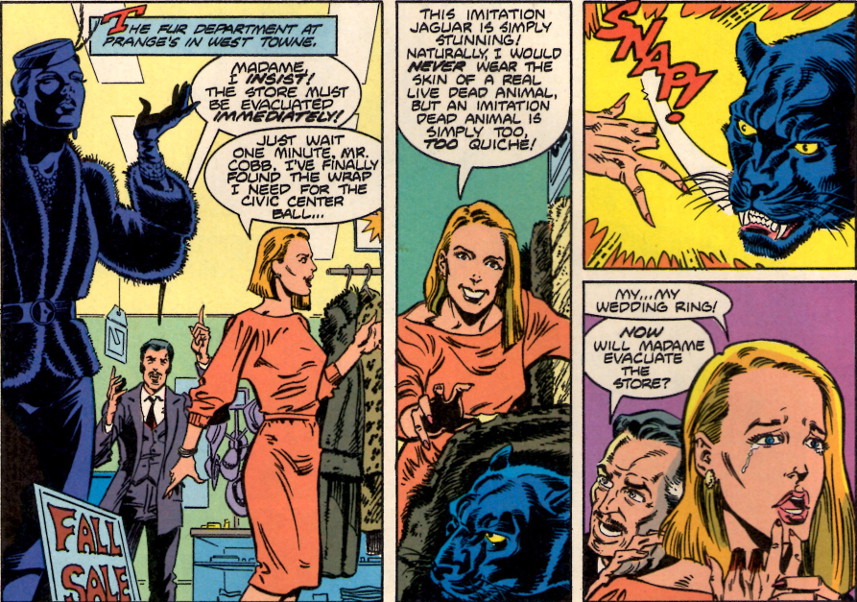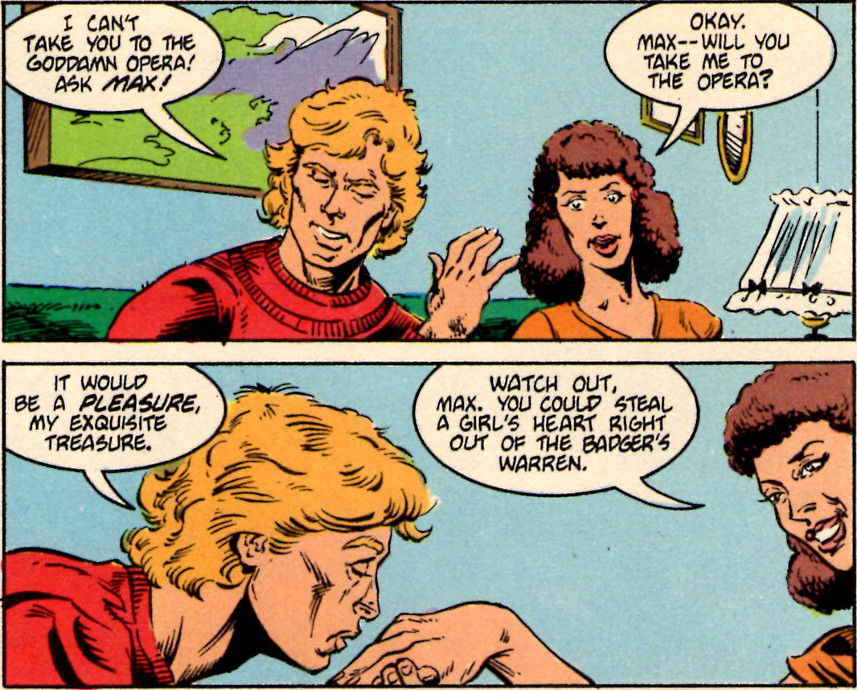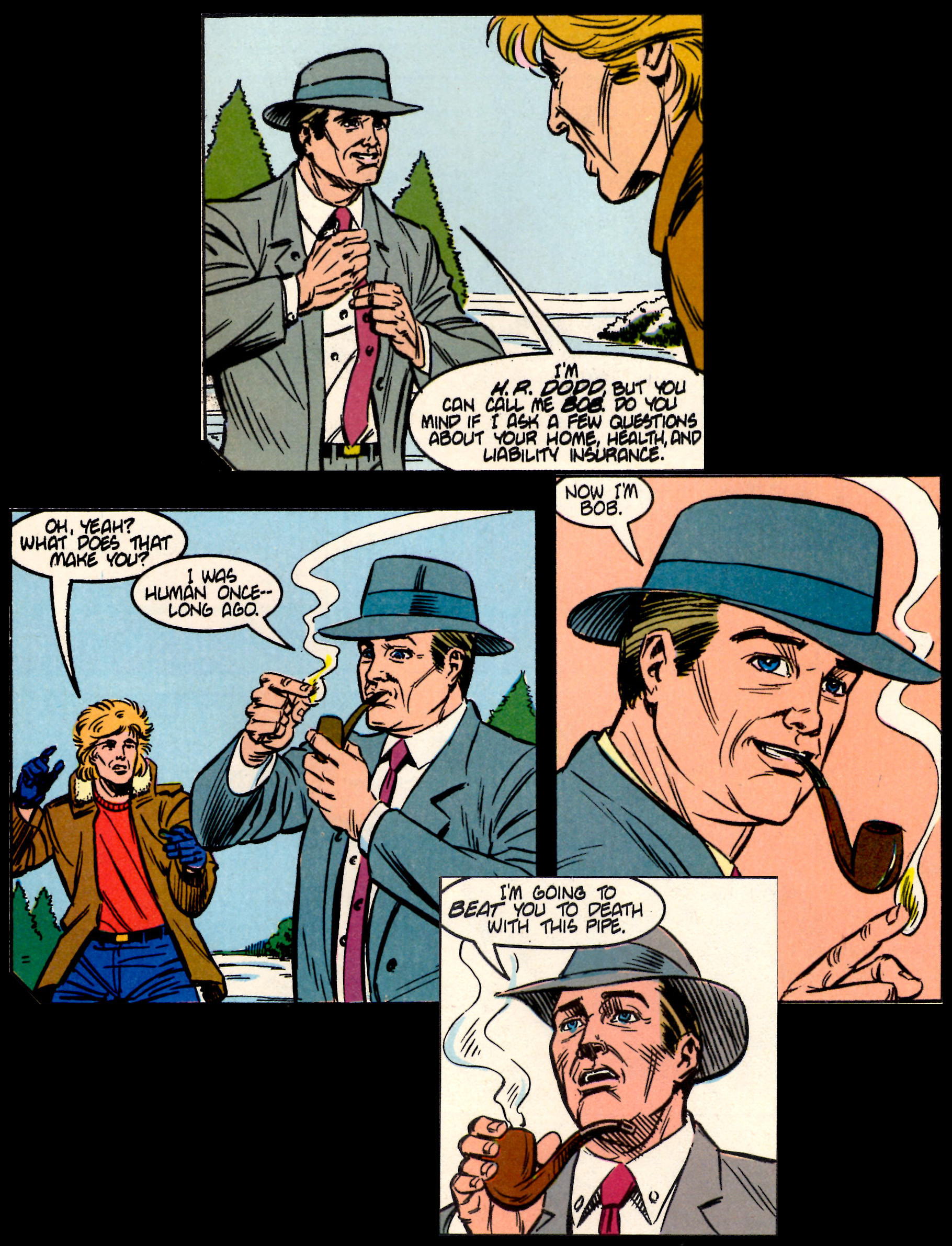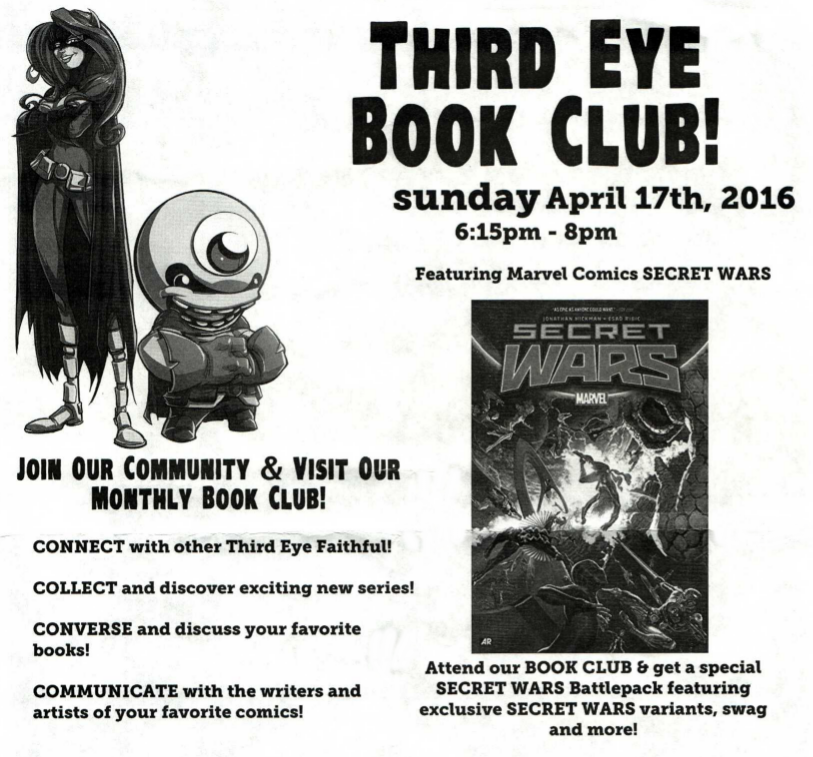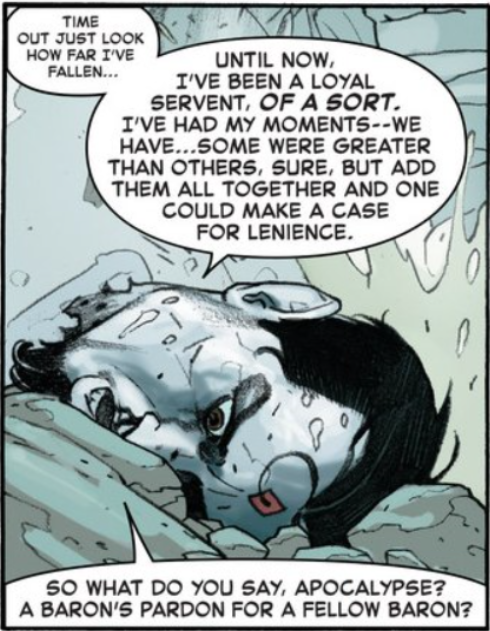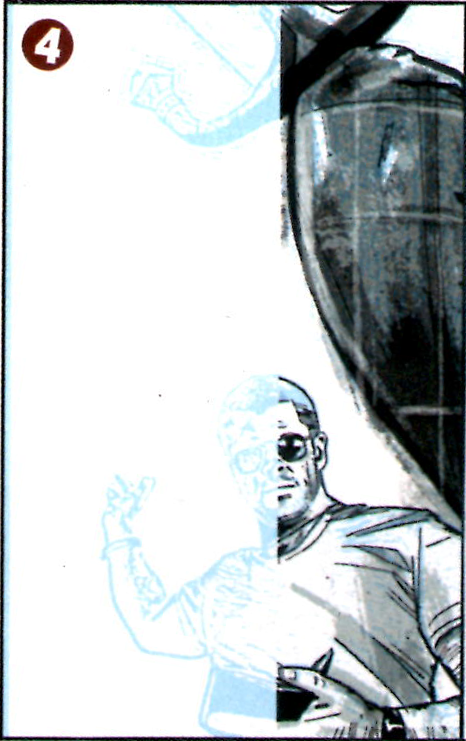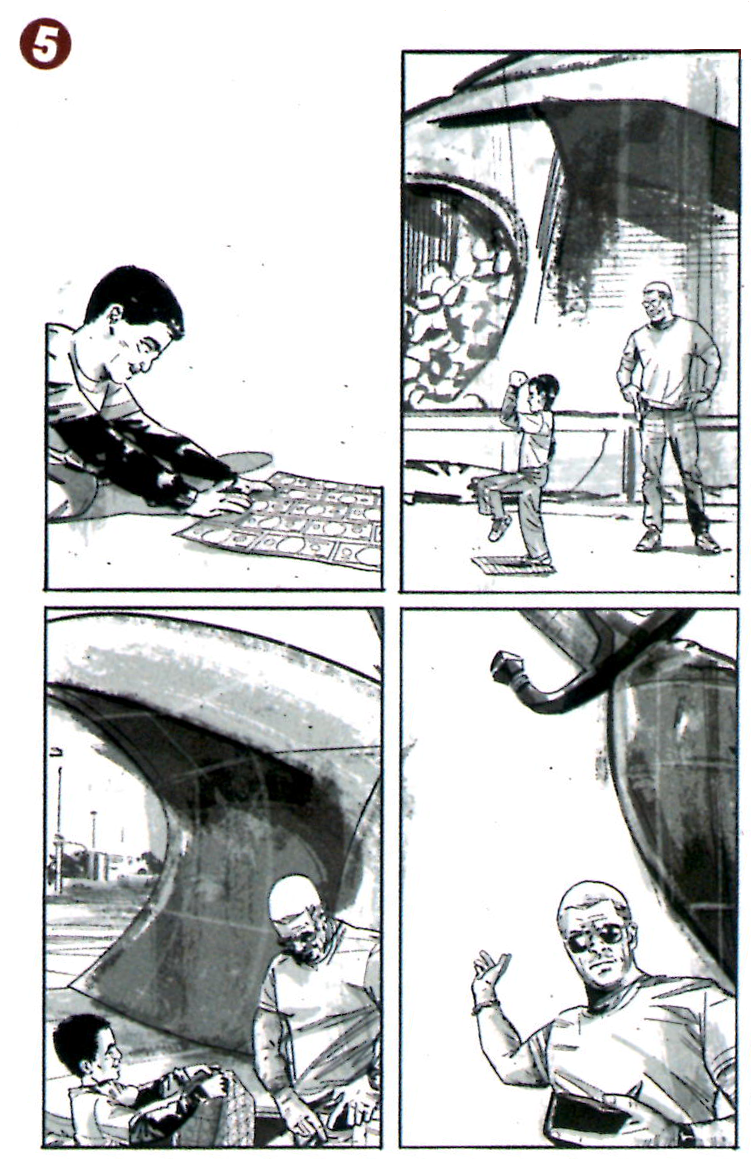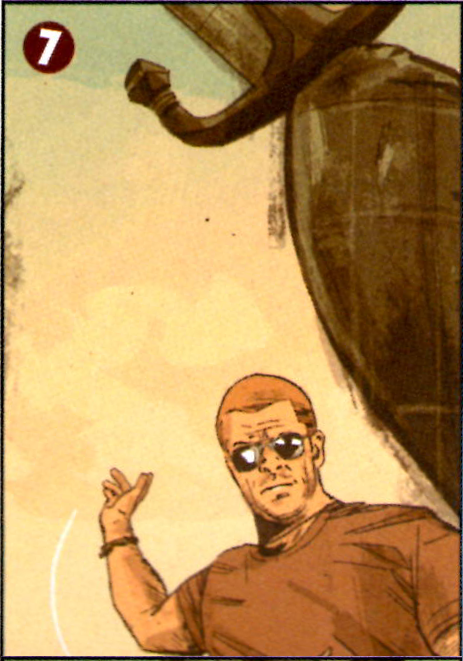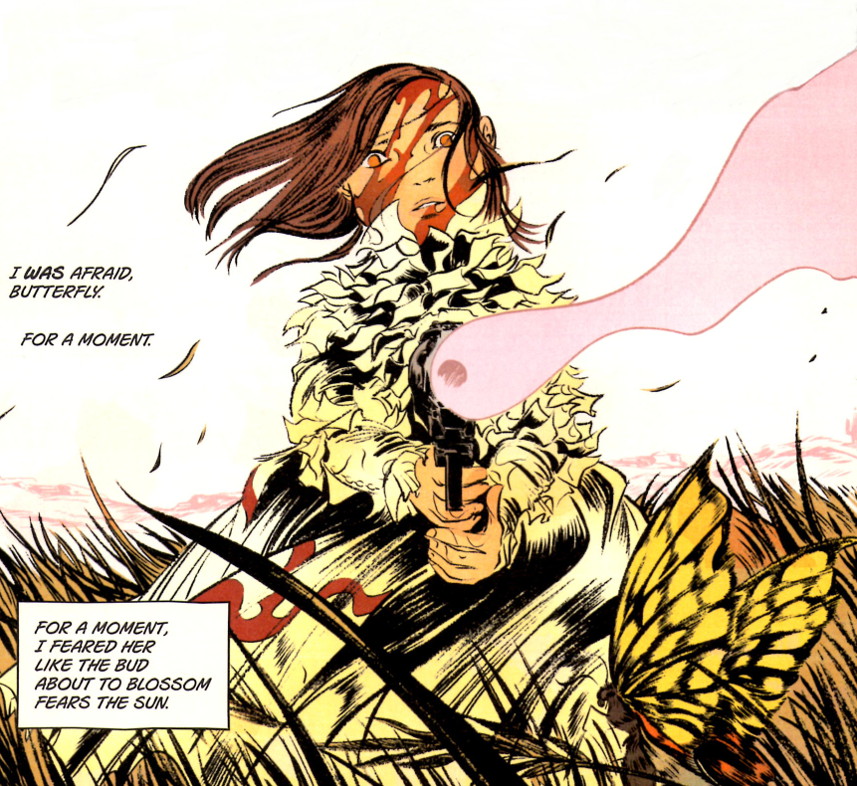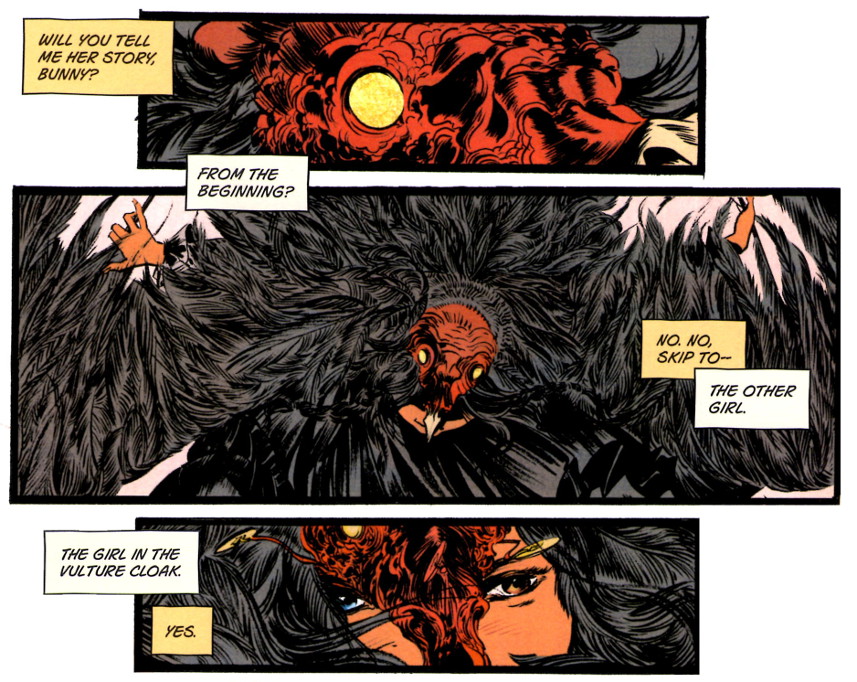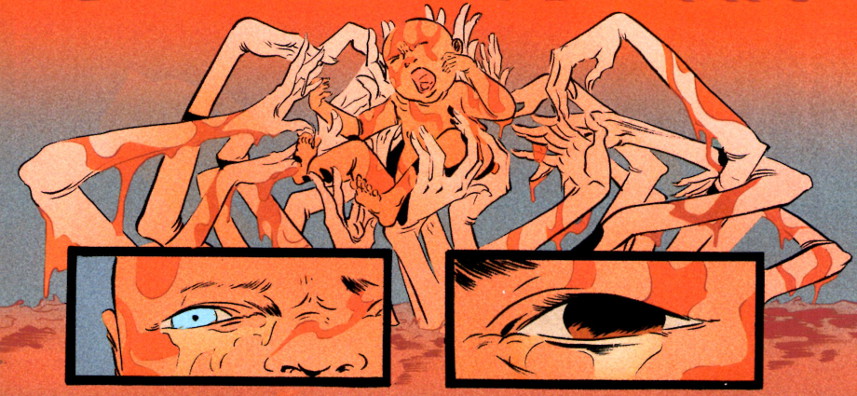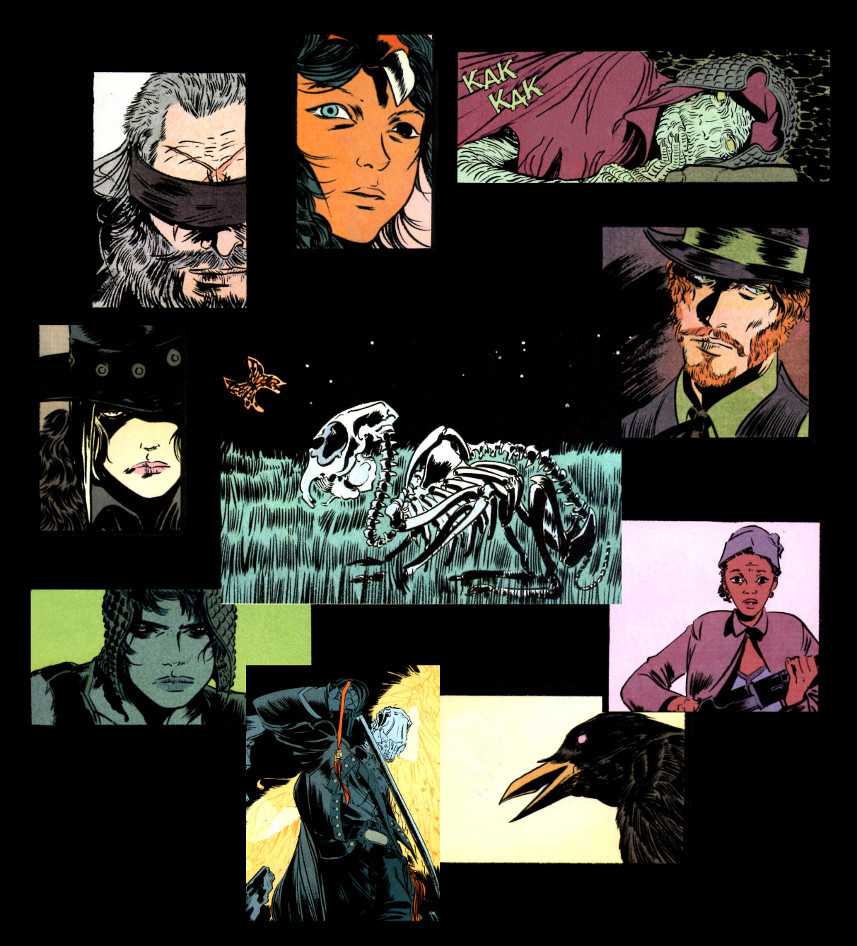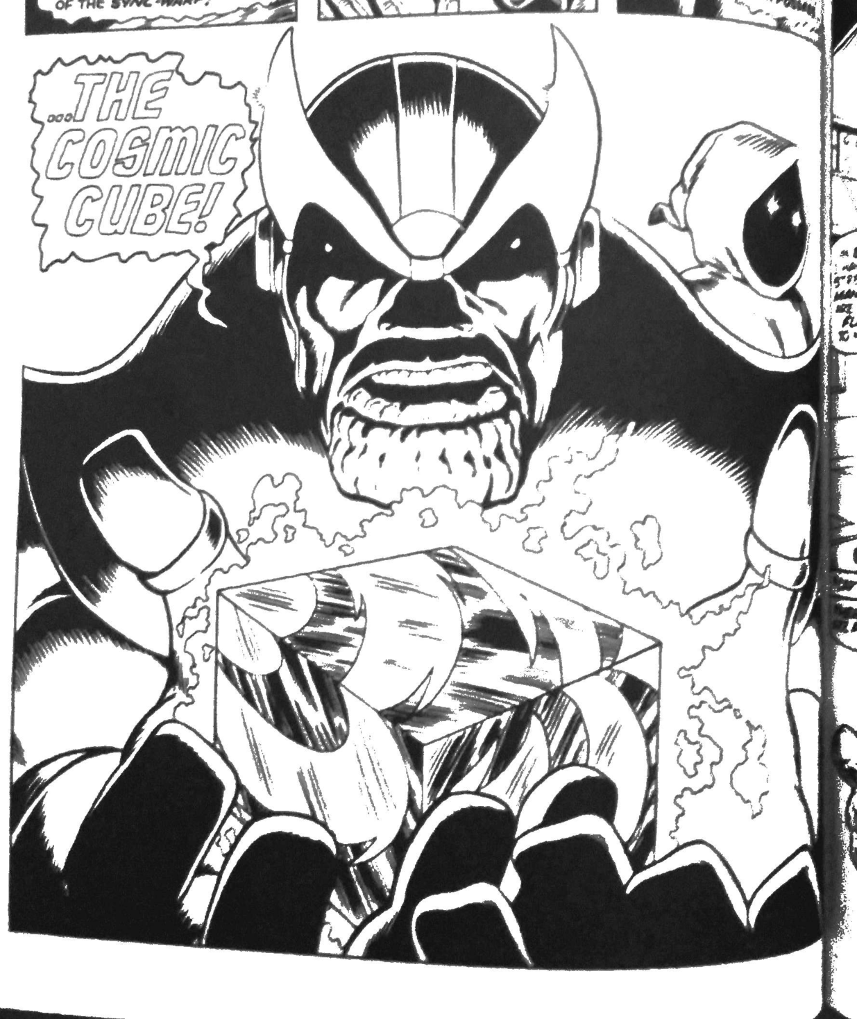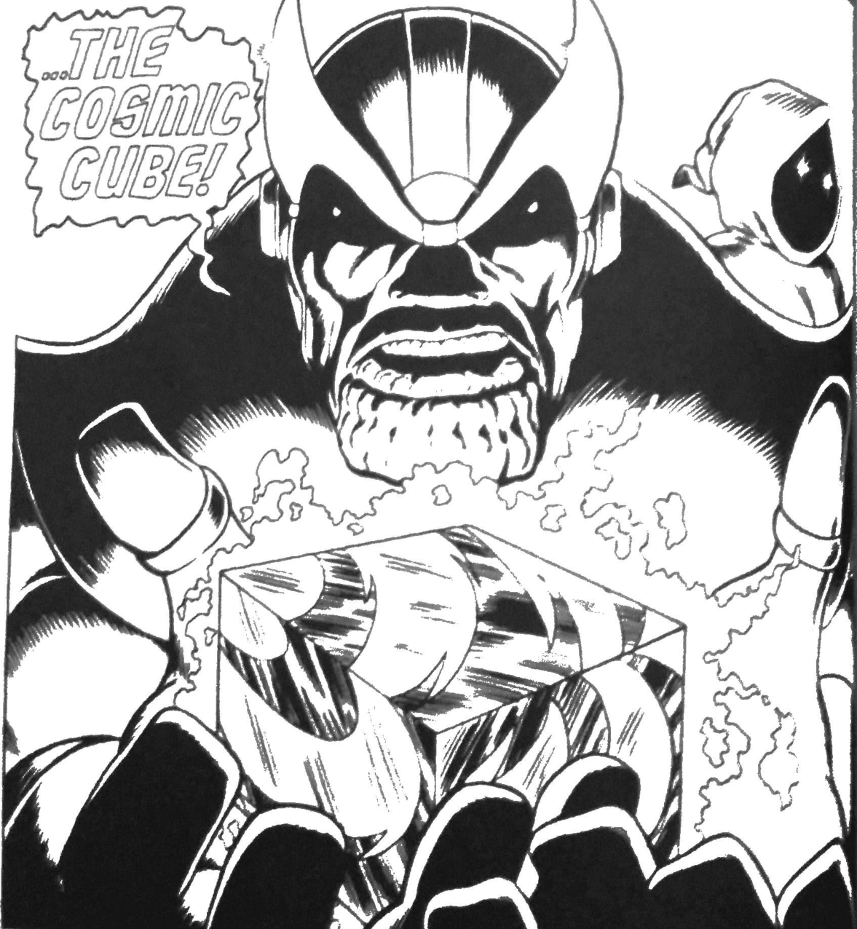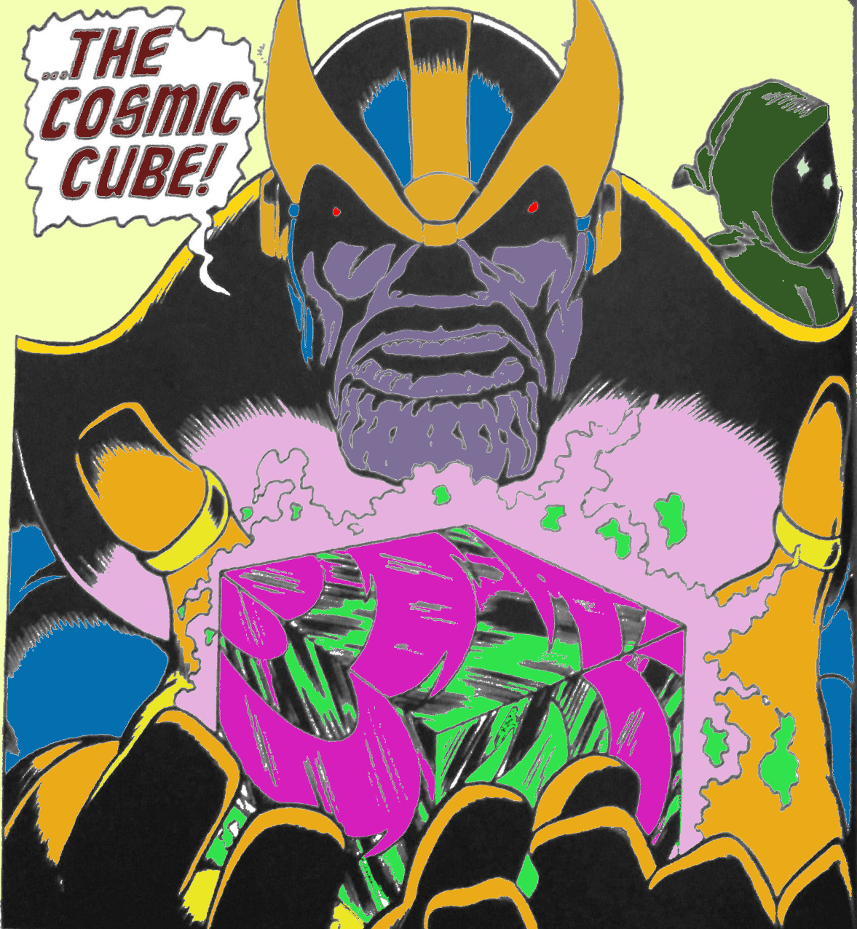Badger Don’t Care
Yo! Larry. If that rallying cry doesn’t mean anything to you then you were not exposed to one of the most fun and quirky comic book runs of the 1980s – The Badger.
The central character, one Norbert Sykes, just happens to a Vietnam vet who exhibits multiple-personalities, a curious devotion to and the ability to speak with animals, a penchant for mastering various abstruse martial arts, and a total disregard for both social convention and for his own safety. In his role as Badger, Sykes is, more or less, the familiar of a 4th century Druid wizard who goes by the name Ham since his original Welsh name is a touch too long to pronounce.
Whether Ham is a force for good or evil or just in it for a little material comfort and wealth (well a lot of wealth – more on that in a moment) is difficult to pin down, but his magic certainly gets him and the Badger into some curious and amusing spots.
The final member of our little group is a clinical psychologist named Daisy Fields. On paper, Daisy is Ham’s private secretary, but closer to the truth, she seems to be both a moderator and enabler of the hijinks and insanity that ensue.
If my description seems murky, weird, confusing, and aimless then I shall have been true to the nature of the book. And what a wonderful nature it is. Rather than being a ponderously heavy and serious examination of modern life, The Badger has its tongue fairly planted in its cheek even when displaying biting social commentary on everything from annoying people in the checkout line in front of you or those who start their yard work a wee bit too early in the morning to the sometimes self-involved behavior of the rich and corporate malfeasance. The Badger shows that a good sense of humor is a powerful tool for both entertaining and making a point.
The trio is first brought together in a state sanitarium somewhere in Wisconsin, where the central figures of these tales, Norbert and Ham, are enjoying room and board and relaxing padded rooms courtesy of that fine state. It seems that Norbert has been committed for committing a variety of civil disobediences of the sort mentioned above.
On the other hand, the state has consigned Ham to a rubber room of catatonia and vagrancy. The former condition is a consequence of some early handling of the Druid by the angry townsfolk of the 4th century British Isles. It seems that Ham had a nasty habit of sacrificing whatever he needed to get the magic he wanted
Having had enough, the various peoples subdue him and, failing to be able to harm or kill him, they place him under spells of deep sleep and then hiring explorers to drop his body off the face of the Earth. Mistaking North America as the end of the world, the explorers deposit Ham in what would later be one of the Midwest’s most interesting commonwealths.
Sharing adjacent rooms, Ham and Badger forge a psychic connection that soon blossoms into a full-fledged working relationship
Affecting their joint release, Ham soon discovers that the magic of money may be as powerful as the magic of sacrifice. Using his wizarding skill, he amasses a small fortune which he uses to set to build a castle in which he and Badger will use as a base of operations. He also entices Daisy from the Sanitarium with both a promise of more money and a chance to examine Norbert and his various splintered personalities at her leisure. He wants her part of the team so that she can help manage his growing wealth and to help manage the Badger, who is an integral part of his scheme.
As Ham later explains to a supernatural entity called the Hodag, the Badger is his familiar
and that connection – sometimes strained, oftentimes cordial, and always strange – catapults them into bizarre territory and unimagined adventure that allows the series creator, Mike Baron, the material he needs to explore spirituality, individualism, society, lunacy, and fun.
For example, one the earliest adventures involves a California-based energy company being a poor corporate citizen. Wanting to build a Midwest power plant, the company has procured a parcel of land that contains an extremely old oak tree. They plan to level the parcel in order to make way for their new power plant, thus ending the oak’s long life span. Being a Druid, Ham desperately wants the land since the ancient oak is a powerful source of magic. Being rich, Ham tries to purchase the land in the usual fashion – directing one of his minion’s to dig up information while he is chauffeured in his Bently by another
When he discovers that he has been too late to save the oak, Ham vows revenge. He asks the Badger to
Using the resulting, mystic surf-board, Ham mounts a huge tidal wave which he has aimed at the power company’s California headquarters.
At the last minute, disaster is averted, but not before the corporate-types are sufficiently chastised by the whole experience.
Other zany vignettes include an exchange between a flight attendant and a westward-bound Badger that reflects a point many air travelers have pondered
and a self-absorbed, wealthy woman, who disregards the need to evacuate an upscale Madison mall when two jaguars free themselves from a mall-attraction and decide to do a little shopping
Along the way, the reader gets to meet some of the various personalities that make up Norbert’s psyche
Of particular interest, is Max, who is charming, refined, and gentlemanly in ways that neither Norbert nor Badger can be
Along the way, Mike Baron throws in a lot of esoteric modern lore, including a whole-issue (#23) homage to the Church of the SubGenius, in which the International Brotherhood of Brujos (IBOB) has sent a powerful demon, who just happens to bear a striking resemblance to J.R. ‘Bob’ Dobbs, to take on the Badger (a sampling of their verbal sparring shown below)
All told, I wish there were trade paperback versions of The Badger readily available because it was a fun read and remains quite fresh. It would do the new generation of comics readers some good to see some of the crazy but charming ways in which a series can be both enjoyable and meaningful. A new version of The Badger, stylistically updated to reflect the 30-years that have elapsed, is being published. Whether it can conjure the old fun remains to be seen but if not we always have Yo! Larry to fall back on.

